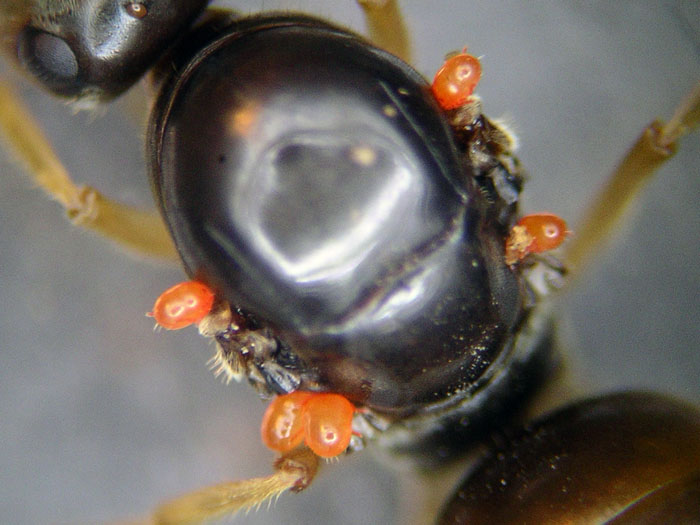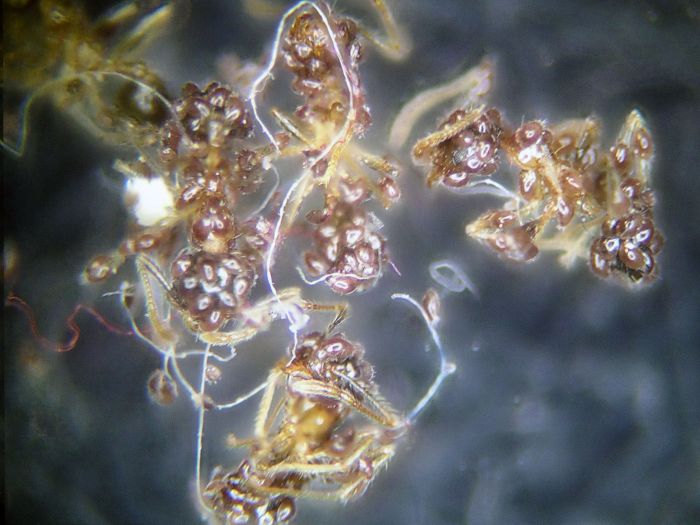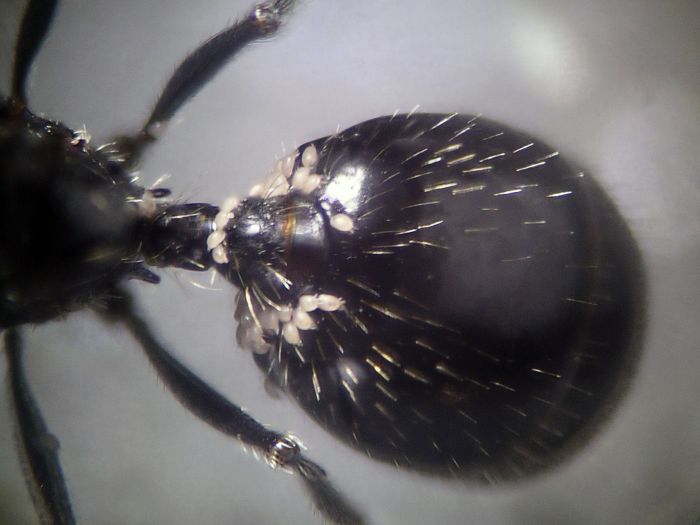There is a big difference between parasitic mites and phoretic mites living on ants or other invertebrates. Since I can't ID most of the mites I see, does anyone know how tell the difference?
Two times I have witnessed mites on ants that were parasitic with certainty.
One time it was a bunch of Myrmecocystus testaceus I caught. These mites clearly had their heads bored into the ants in soft areas between the pieces of their exoskeleton.

It was pretty obvious that these were parasitic, so I removed them as best I could with the tools I had at the time.
Another time it was an entire colony of Pheidole megacephala. These were given to me, and were eventually discovered to be completely covered in mites. The ants were dying left and right and in a way that made it fairly obvious that it was the mites that were killing them.

Now these mites were so big compared to the ants, and there were so many of them, that they pretty much covered the ants completely and therefor I can't tell exactly where or how they are feeding on the ants, but it could have certainly been at the joints of their exoskeleton or any soft spots they can get to.
A while back I found mites all over some Veromessor pergandei queens I found.

While it might look like they are in the joints of the ant's exoskeleton, most weren't and the ones that were, were actually facing out so their heads were not in the joint. I could never find any that looked like they were actually feeding on the ant's hemolymph, so I could never say for sure that these were parasitic. I think it was likely that they were just phoretic. I killed them all and removed them anyways just to be safe.
I have now found some extremely tiny mites on my Dolopomyrmex queens, and I'm a little worried now since they are of my only remaining Dolopomyrmex queens, and even have developing brood. These mites, like the ones that were on the Veromessor pergandei don't seem to be feeding on any soft areas of the ant.
I'm only assuming these mites can only feed on the ant's hemolymph though the soft areas between the plates of their exoskeletons, which brings me back to my original question. How can I tell whether or not a mite is parasitic by looking at their behavior? Is it possible for these mites to be feeding on the ant right through their exoskeleton? Could they be feeding on their hemolymph for a while, and then be taking a break and moving around?
Also, if anyone knows of any material I can read that talks specifically about parasitic mites and exactly how they feed on their host, I would love to read it. I searched around for a while, but could only find very general information about parasitic mites.















